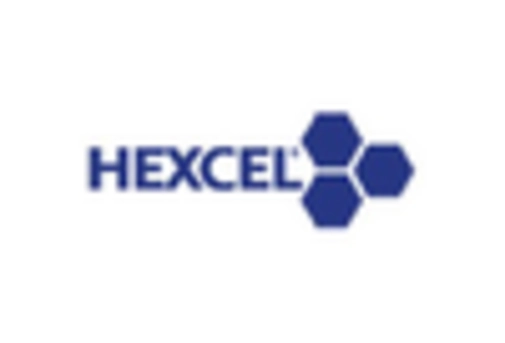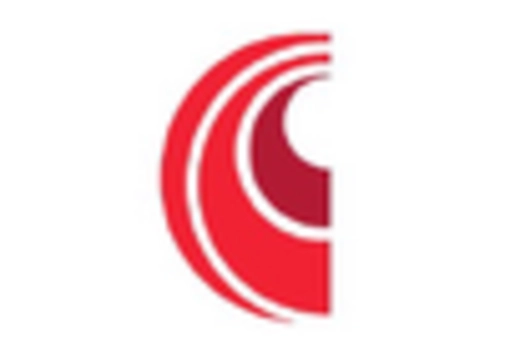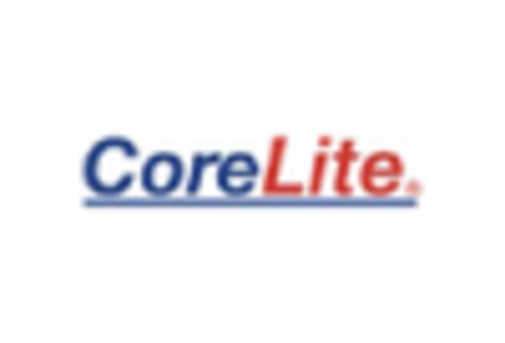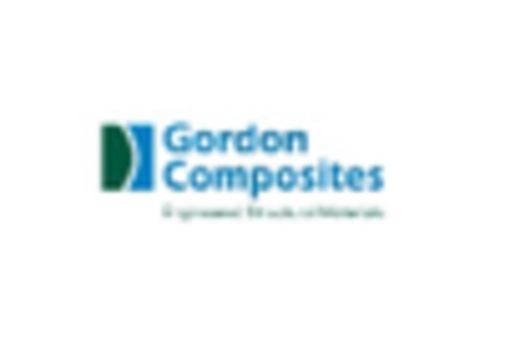The aluminum honeycomb market exhibits a dynamic competitive landscape characterized by innovation and strategic partnerships. Key players such as Hexcel Corporation (US), Alucoil (US), and Gurit (US) are actively shaping the market through their distinct operational focuses. Hexcel Corporation (US) emphasizes innovation in lightweight materials, particularly for aerospace applications, which positions it favorably in a sector increasingly prioritizing fuel efficiency. Alucoil (US), on the other hand, has been focusing on regional expansion and enhancing its product offerings to cater to the growing demand in construction and transportation sectors. Gurit (US) appears to be leveraging strategic partnerships to enhance its technological capabilities, particularly in composite materials, thereby strengthening its competitive edge. Collectively, these strategies indicate a market that is not only moderately fragmented but also increasingly driven by technological advancements and customer-centric solutions.
In terms of business tactics, companies are localizing manufacturing to reduce lead times and optimize supply chains, which is crucial in a market that demands rapid delivery and customization. The competitive structure remains moderately fragmented, with several players vying for market share, yet the influence of major companies is palpable. Their ability to innovate and adapt to changing market conditions significantly shapes the competitive dynamics, fostering an environment where agility and responsiveness are paramount.
In November 2025, Hexcel Corporation (US) announced a new partnership with a leading aerospace manufacturer to develop advanced aluminum honeycomb structures aimed at enhancing aircraft performance. This strategic move underscores Hexcel's commitment to innovation and positions it to capture a larger share of the aerospace market, which is increasingly focused on lightweight and high-performance materials. The collaboration is expected to yield significant advancements in material technology, potentially setting new industry standards.
In October 2025, Alucoil (US) launched a new line of aluminum honeycomb panels designed specifically for the construction industry, emphasizing sustainability and energy efficiency. This initiative not only aligns with current market trends favoring eco-friendly materials but also enhances Alucoil's product portfolio, allowing it to meet the evolving needs of architects and builders. The introduction of these panels could potentially increase Alucoil's market penetration in the construction sector, where demand for sustainable solutions is on the rise.
In September 2025, Gurit (US) expanded its manufacturing capabilities by investing in a state-of-the-art facility dedicated to producing aluminum honeycomb materials. This expansion is indicative of Gurit's strategy to enhance production efficiency and meet the growing demand across various sectors, including automotive and aerospace. The investment is likely to bolster Gurit's competitive position by enabling it to offer faster turnaround times and improved product quality, which are critical factors in maintaining customer loyalty.
As of December 2025, the competitive trends in the aluminum honeycomb market are increasingly defined by digitalization, sustainability, and the integration of AI technologies. Strategic alliances are becoming more prevalent, as companies recognize the value of collaboration in driving innovation and enhancing operational efficiencies. The shift from price-based competition to a focus on technological advancement and supply chain reliability is evident, suggesting that future competitive differentiation will hinge on the ability to innovate and respond to market demands swiftly.


















Leave a Comment